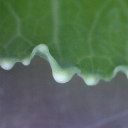- JMP will suspend normal business operations for our Winter Holiday beginning on Wednesday, Dec. 24, 2025, at 5:00 p.m. ET (2:00 p.m. ET for JMP Accounts Receivable).
Regular business hours will resume at 9:00 a.m. EST on Friday, Jan. 2, 2026. - We’re retiring the File Exchange at the end of this year. The JMP Marketplace is now your destination for add-ins and extensions.
- Subscribe to RSS Feed
- Mark Topic as New
- Mark Topic as Read
- Float this Topic for Current User
- Bookmark
- Subscribe
- Mute
- Printer Friendly Page
Discussions
Solve problems, and share tips and tricks with other JMP users.- JMP User Community
- :
- Discussions
- :
- Re: Scripting - How to select best fit distribution and collect capability param...
- Mark as New
- Bookmark
- Subscribe
- Mute
- Subscribe to RSS Feed
- Get Direct Link
- Report Inappropriate Content
Scripting - How to select best fit distribution and collect capability parameters?
I want to create a script that does the following:
1) take a data set (1 column at a time)
2) do a continuous fit for all distributions
3) find the best fit, apply the spec limits and analyze capability parameters (CpK specifically)
4) output the CpK (and probably other stuff) to a table
I know how to do this manually, but even after I do it and save a script, the script doesn't regenerate the same analysis I had done originally. If I set the spec limits within a given distribution (the red triangle beside Normal 3 instead of the top level triangle), that gets lost completely in the script. If I set them from the top level the info is stored, but I have 50-100 data sets to run this analysis on, and they are a range of distributions. I need the script to find the BEST fit, then do this analysis.
Example 1 below is a code snippet I've gotten to work (not output to a table yet, but at least get the right distribution and analysis), but it requires me to know that the data will be Normal 3 mixture. If I use Example 2 it defaults to a Normal distribution, which is wrong. If I could figure out how to evaluate the best fit as a parameter I could use in a switch function or comparable to set up the syntax required for each distribution.
// Example 1 that gives meaningful results, but requires me to know the distribution
Distribution(
Column("Test Data"),
Fit Distribution (Normal Mixtures( Spec Limits( LSL( -1 ), USL( 1 ) ), Clusters( 3 ) )
)
);
// Example 2 gives garbage because it assumes the distribution is normal, and it's never normal
Distribution(
Column("Test Data"),
Fit Distribution ("All"), Capability Analysis ( LSL( -1 ), USL( 1 ) )
);Other help with outputting to a table would be great too. This is my first JMP script and I'm struggling to find clear examples in the Scripting Guide.
Accepted Solutions
- Mark as New
- Bookmark
- Subscribe
- Mute
- Subscribe to RSS Feed
- Get Direct Link
- Report Inappropriate Content
Re: Scripting - How to select best fit distribution and collect capability parameters?
Here is a script that should give you a good start. It performs your desired tasks for a single column
names default to here(1);
dt=open("$SAMPLE_DATA\big class.jmp");
// Set the limits for the target column
dt:height << set property("spec limits",{LSL(57),USL(68),show limits(1)});
// Run the Distribution Platform
dis=Distribution(
Continuous Distribution( Column( :height ), Fit Distribution( "All" ) ),
capability analysis(1)
);
// Point to the first capability analysis and create a data table from it
dtCpk = report(dis)[outline box(9)][1][3][1]<<make data table;
// Strip off the tpe of distribution from the paragraph heading and give that to the new data table
dtCpk << Set Name(report(dis)[outline box(6)]<<get title);
// Close the unwanted output
report(dis)<<close window;- Mark as New
- Bookmark
- Subscribe
- Mute
- Subscribe to RSS Feed
- Get Direct Link
- Report Inappropriate Content
Re: Scripting - How to select best fit distribution and collect capability parameters?
I concur with Stephen's caution.
I understand the desire to reduce the tedium of performing such an analysis by hand with a script. A script is a perfect way to automate JMP activity.
But the ability to fit and rank all of the distribution models at once is intended for a exploratory analysis. You might conduct such an exploration early in process development when little is known about process behavior. On the other hand, conducting a capability study is a confirmatory analysis that is conducted late in process development when much is known and nothing about the process is changing. For example, a proper capability analysis requires that process control has been demonstrated, at least through phase I.
You can't really automate the subjective decision about the distribution model while using objective methods. Or maybe I should put it like this, "Just because you can doesn't mean you should."
- Mark as New
- Bookmark
- Subscribe
- Mute
- Subscribe to RSS Feed
- Get Direct Link
- Report Inappropriate Content
Re: Scripting - How to select best fit distribution and collect capability parameters?
Here is a script that should give you a good start. It performs your desired tasks for a single column
names default to here(1);
dt=open("$SAMPLE_DATA\big class.jmp");
// Set the limits for the target column
dt:height << set property("spec limits",{LSL(57),USL(68),show limits(1)});
// Run the Distribution Platform
dis=Distribution(
Continuous Distribution( Column( :height ), Fit Distribution( "All" ) ),
capability analysis(1)
);
// Point to the first capability analysis and create a data table from it
dtCpk = report(dis)[outline box(9)][1][3][1]<<make data table;
// Strip off the tpe of distribution from the paragraph heading and give that to the new data table
dtCpk << Set Name(report(dis)[outline box(6)]<<get title);
// Close the unwanted output
report(dis)<<close window;- Mark as New
- Bookmark
- Subscribe
- Mute
- Subscribe to RSS Feed
- Get Direct Link
- Report Inappropriate Content
Re: Scripting - How to select best fit distribution and collect capability parameters?
Thanks for the help but the capability analysis still defaulted to a Normal distribution. You did give me some other coding ideas on how to improve my script though! The "outline box" command is very useful.
I was able to use "outline box" to parse out the top fit from the Compare Distributions table and key off that name (Normal 3 Mixture) to create the string required for the capability analysis call required for that distribution. This is NOT elegant, but it's working so far.
Thanks.
- Mark as New
- Bookmark
- Subscribe
- Mute
- Subscribe to RSS Feed
- Get Direct Link
- Report Inappropriate Content
Re: Scripting - How to select best fit distribution and collect capability parameters?
It requires a degree of subjective evaluation, in the example above the AICc scores for the more exotic/complex fits were only fractionally lower. If many of the columns share the same mechanism for how the data is generated, it might be prudent to pick the best ranking fit across all those columns by combining the ranks from all the different columns.
This will require a bit more JSL as you will need to save the Best fits table for each column, rank them, compare them and then extract the best fit across the columns.
- Mark as New
- Bookmark
- Subscribe
- Mute
- Subscribe to RSS Feed
- Get Direct Link
- Report Inappropriate Content
Re: Scripting - How to select best fit distribution and collect capability parameters?
I concur with Stephen's caution.
I understand the desire to reduce the tedium of performing such an analysis by hand with a script. A script is a perfect way to automate JMP activity.
But the ability to fit and rank all of the distribution models at once is intended for a exploratory analysis. You might conduct such an exploration early in process development when little is known about process behavior. On the other hand, conducting a capability study is a confirmatory analysis that is conducted late in process development when much is known and nothing about the process is changing. For example, a proper capability analysis requires that process control has been demonstrated, at least through phase I.
You can't really automate the subjective decision about the distribution model while using objective methods. Or maybe I should put it like this, "Just because you can doesn't mean you should."
Recommended Articles
- © 2025 JMP Statistical Discovery LLC. All Rights Reserved.
- Terms of Use
- Privacy Statement
- Contact Us



